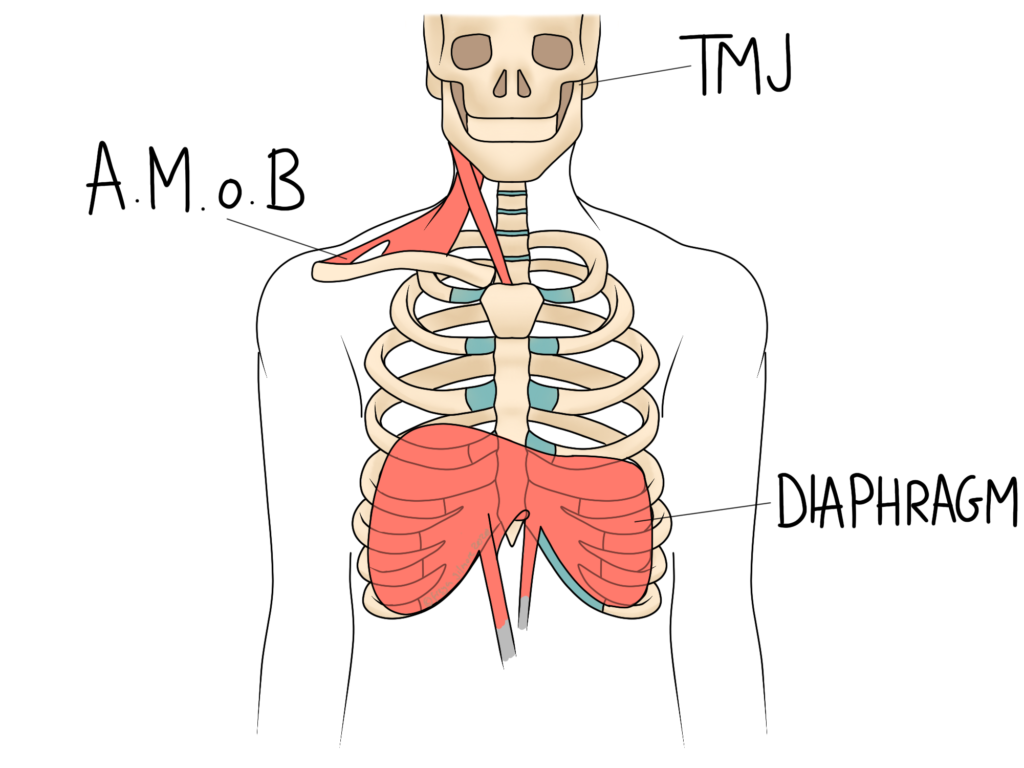A number of aches and pains can be blamed on, or at least exacerbated, by stress. One commonly affected area is the upper back, extending to the shoulders and neck. When stress causes tension in the neck, it can also lead to cervicogenic headaches.

Although we probably can’t do much to alleviate the stress itself, we can approach the issue from a different angle to help the body cope better with it. There are a few reasons why stress manifests physically around the upper back.
Fight or Flight
You might have heard of the “fight or flight response”, sometimes also known as “fight, flight, or freeze”. This is the nervous system’s natural response to stress, or perceived danger. It was useful when we were cavemen and we needed that burst of adrenaline to escape a predator, but it’s more of a hinderance in the modern day. Directing blood flow away from the digestive system and towards the muscles isn’t much use when the threat is a deadline at work!
With blood redirected to muscles, they are primed to engage. Some people feel stress cause tension in their hips or legs, and others in their shoulders- both make sense from the fight or flight perspective. Although your stress might linger for days or weeks, we can help the muscles to relax with treatment, exercise, and advice about warm or cool compresses.
Breathing Under Tension
Breathing also changes when you’re under stress. If your tension sits on your abdomen, you might find yourself bracing your core. If so, the diaphragm might be involved too. The diaphragm is a big sheet of muscle that sits at the bottom of the ribs and is responsible for pressure changes in the chest. These changes are the biggest driver of breathing, allowing air to flow in and out of the lungs. When the diaphragm is tense, it doesn’t encourage those deep, efficient breaths, and smaller muscles have to take over.
The accessory muscles of breathing are much less efficient, and they fatigue easily. They are primarily located around the tops of the shoulders, which is another reason why stress can cause tension here. Like the fight or flight response, they are effective when utilised for short bursts, like increasing respiration while sprinting. They’re not so good at being worked for long periods of time.
Managing Tension with Osteopathy
With these factors in mind, we have a few approaches for stress-related aches and pains. Massage techniques and stretches can be helpful to relieve tension in the muscles that you find are particularly affected. If there are other issues underlying, such as early stage arthritis or an old injury, treatment for those can positively impact the primary symptoms too. Your osteopath will treat your body as a whole, so don’t be surprised if Beverley asks you about an injury from long ago if she thinks it might play a role in your current symptoms.
When breathing is affected, treating the diaphragm can be an effective way to get to the root of the mechanical issue. Techniques to release the muscle, and exercises to encourage better movement are key. Changing the way you breathe can be difficult, like trying to change your sleeping position. But even if you can only change it while you’re doing the exercises, you’re still giving those smaller muscles respite and reminding the diaphragm of how it should be working.
Click here to book an appointment with Beverley Palmer at the Koster Clinic
